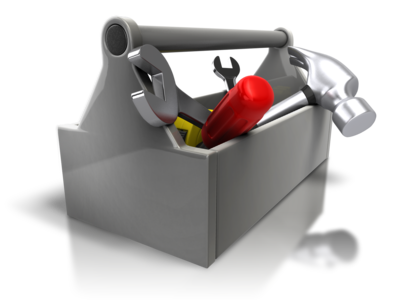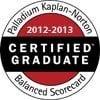What is Value Engineering?
Have you ever been a CEO with a SAP Project that just doesn’t seem to be working? Perhaps one that hasn’t shown an ROI.
I was once hired to develop a reporting strategy for a company that was in the 8th year of a 2 year implementation. It was very interesting interviewing the CEO, right before he went on CNBC to announce his quarterly earnings, a very key KPI for a CEO.
CEO's are VERY Interested in ROI
In short, he wanted to know when he was going to see some return on their investment in SAP. The SAP project was mission critical to the business, and covered nearly the full-scope of what you could do with SAP, including SAP Supply Chain Management (SAP APO), SAP HRMS, SAP FICO, SAP CRM, SAP EHS, SAP Industry Solutions, and a large number of custom developments and enhancements created (usually) with ABAP.
Layer In the Value Engineering Methodology
Today, I would have a different conversation with him or any of the other CEO’s I have dealt with over the years. Specifically, I would introduce the concept of SAP's Value Engineering Methodology to him.
SAP Value Engineering Methodology
SAP has its own version of Value Engineering (I know, I am one), but the actual term “Value Engineer” goes way back, and the U.S. military has a highly evolved Value Engineering approach. Today, however, I want to discuss some of the offerings from SAP Value Engineering and when and where to employ them.
Those offerings include many software tools but are not limited to:
.png?width=200&height=150&name=toolbox_kit_fix_400_clr_6972(1).png)
Value Engineering Toolbox
- Benchmarking
The SAP Value Lifecycle Manager provides voluntarily submitted benchmark data from peers within the SAP eco-system. This goes with the idea that SAP customers can help each other while competing. The work done by SAP reflects SAP Company Values espoused down through the years. SAP has always taken an engineering approach to everything it does, and this tool reflects that. - POV (Point of Views)
- OI (Outside In)
- CVA (Collaborative Value Assessment)
- Business Transformation Study
- Move-the-Needle
- SAP Insight
- Light Health Check
- Enterprise Health Check
- Value Business Case
- Value Academy
Each of these services are designed to be employed at different stages of the SAP lifecycle, and in the case of the project I mentioned above, a Collaborative Value Assessment would clearly have been called for.
Perform an Honest Value Analysis
A value analysis would have revealed that the project was actually on-track, primarily because of a series of acquisitions that occurred during the SAP project implementation, and thus various scope extensions had taken place and had been incorporated in the change control process.
However, it was in extreme danger of outright cancellation and even if ultimately successful (it was), it would still suffer from long term, negative perceptions (it did).
How would a CVA Have Helped the Project Get Back on Track?
How would the CVA actually have helped get the project back on track. By changing the focus of the SAP implementation to value.
With a CVA, you work with a team of Senior Solution Specialist and Value Engineers, who together form the value engineering team, and focus the project on value delivery.
You might ask how a project is currently sold and designed, if not on value delivery?
Minimize Project Risk
As it turns out, a project is usually laid out to minimize the risk during implementation with a focus on the lowest life cycle costs, both to the client and to the implementer. Though there is nothing wrong with that, it means that many years may elapse before the business achieves any kind of positive ROI.
Longer Project Timelines = Higher Project Risk
This may be technically the least risky approach from an implementation standpoint, but very risky from a project success standpoint.
How SAP Value Management Could Have Helped
In the case of a severely over-run project, the CVA approach would result in a reordering of the functionalities to be rolled-out, keeping in mind the push-pull nature of risk vs. reward.
What would it take to perform a CVA?
Aside from the templates provided by SAP to document your value roadmap and the members of the CVA team from the implementer, you would also expect involvement from primarily CxO level business representatives from the client.
Use a Design Strategy to Optimize Value Achieved
The CVA is all about setting both grand design strategy and direction, and ultimately, allocating or reallocating financial and human resources to get the most value from your SAP system in the least amount of time.
So Which VE Tool Should I Use?
The selection of which VE tool to use, in which phase of any project, requires good judgment, and sound knowledge of the tools.
More importantly, it requires leadership to use the tools.
Not all tools make sense and there is a definite ‘right point’ in time to select and use them on any project. Their limits are the boundaries of SAP and sometimes you need teams with a broader vision to really fully leverage the systems you have or are contemplating acquiring and implementing. It's interesting to note that the very first deliverable within any flavor of the SAP Activate methodology is the creation of a sound business case.
How to Select the Right SAP Value Engineering Tool
In order to help you both more fully understand each of these and when they should be employed during the lifecycle of your SAP system, we've put together en ebook, "How to Select the Right SAP Value Engineering Tool". Get yours today by clicking the button.
People Who Read This Also Read:
- Understanding Value Management and SAP BW
- 7 Questions Typically Answered by a BI Strategy
- How to Build a SAP SEM BPS Retail Industry Value Case
- The Shocking Truth About Your Sales Process
- How to Create a 5 Year Strategic IT Roadmap
Please Leave a Comment or Ask Any Questions You May Have
If you have any thoughts or comments on SAP Value Engineering or Success Stories to share about how you uncovered value opportunities with one of these tools, would love to hear about it the comments below.
.png)



